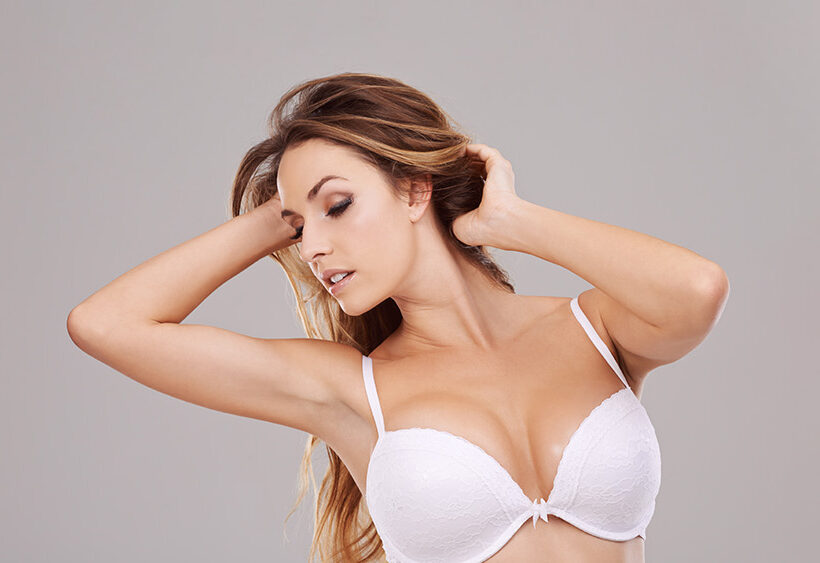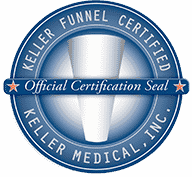Why Women Pursue Breast Augmentation Surgery
Women seek breast augmentation surgery for various reasons. Some desire to enhance overall breast volume, while others seek a more dramatic cleavage or wish to correct breast tissue asymmetry. They may also desire the modest breast lift effect that saline breast implants or silicone breast implants can provide. Additionally, women who have experienced changes in their breast tissue due to weight loss, pregnancy, or aging often choose augmentation mammoplasty to restore a youthful appearance.
Natural Breast Augmentation
For women seeking a more subtle enhancement, Dr. Bohley offers fat transfer breast augmentation. This technique utilizes liposuction to harvest fat tissue from an area of the body that typically has ample fat cells, such as the abdomen, hips, thighs, or buttocks. He then purifies the fat cells before re-injecting them into the area requiring enhancement, in this case, the breasts. Techniques are then used to ensure an even distribution of the donor fat cells.
Thanks to advances in autologous fat grafting, the majority of transferred fat cells survive in the long term. Some women may choose to undergo the procedure again later on for optimal aesthetic results.
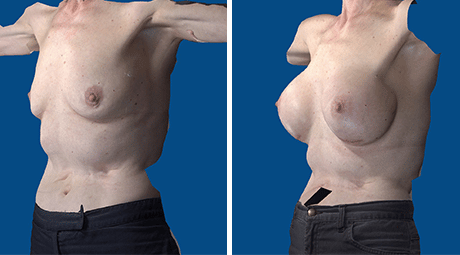
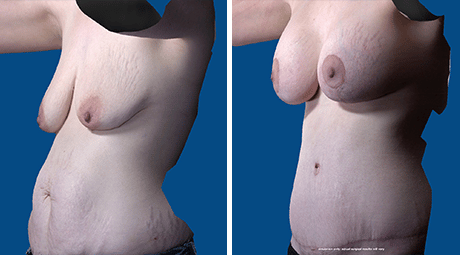
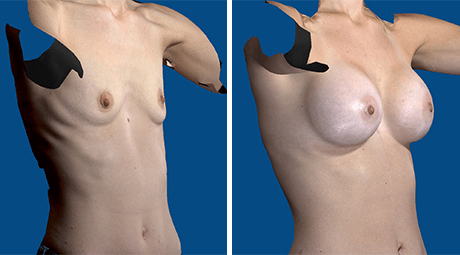
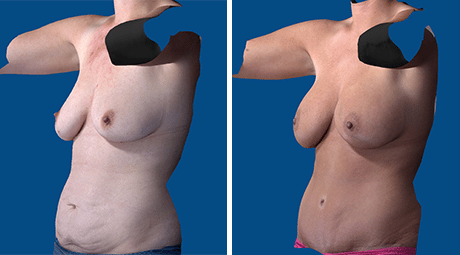
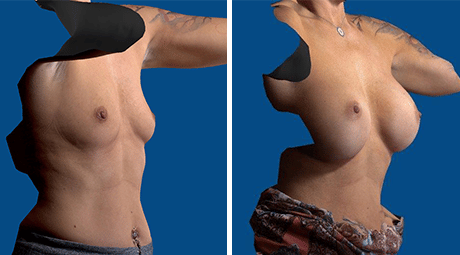
Types of Breast Implants
Types of Breast Implants
During a breast surgery consultation, Dr. Bohley evaluates each patient’s physique and listens to their aesthetic goals for breast augmentation surgery. Based on each person’s unique anatomy and surgical objectives, he recommends an appropriate treatment protocol including the type of breast implant devices, implant placement option, and incision pattern that will best meet the patient’s comprehensive needs. The two main types of breast implants available are saline and silicone implants:
Saline Breast Implants
Saline implants have an outer silicone shell and are filled with a saline solution, or sterile saltwater, after implant insertion. The principal benefit of saline implants is that the body can safely absorb the filling material in the event that the implant leaks or ruptures. Another advantage of saline implants is that Dr. Bohley can use a slightly smaller incision than he would with silicone implants because he fills the saline implants after insertion.
If a saline breast implant rupture occurs, the body can safely absorb the saline fluid. However, saline implants are often not a suitable treatment option for women with thin soft tissue coverage and/or little natural breast tissue, as they are prone to folding and rippling within the implant pocket and may be visible underneath the skin.
Silicone Breast Implants
Silicone implants have both a silicone outer shell and a silicone-gel filling material. They more closely resemble the look and feel of natural breasts than their saline counterparts. Silicone gel implants are also less likely to fold, wrinkle, or ripple within the implant pocket. Newer technology has enabled the development of form-stable, or so-called “gummy bear” implants, which are named for the filling material’s consistency that does not leak out, unlike silicone gel.
One of the main drawbacks of silicone implants is that they require a slightly larger incision than saline implants, as the manufacturer prefills them. Additionally, if the implant’s outer shell suffers any damage, the silicone-gel filling material remains intact, either within the implant pocket or very close to it, making it more challenging to detect an issue with the implant. For this reason, the U.S. FDA recommends that women with silicone implants undergo a breast imaging exam (i.e., a mammogram or MRI of the breasts) every three years, starting the third year after the initial augmentation surgery.
Implant Placement Options
Dr. Bohley can place the breast implants either over the chest muscle (subglandular placement) or under the chest muscle (subpectoral placement):
- Subglandular placement: Implants are positioned over the pectoral muscle during the surgical procedure, ideal for patients with sufficient soft tissue coverage.
- Subpectoral (under the muscle) placement: Implants are placed beneath the chest muscle, often recommended for lean patients who need extra support for their saline or silicone implants.
Again, the decision regarding where to place the breast implants depends on the patient’s unique anatomy and surgical objectives. For instance, placing the implants over the chest muscle may not be an appropriate option for lean women with a lot of muscle mass and too little breast tissue to cover and support the implants properly.
Incision Patterns
A Portland breast augmentation surgeon offers three main types of incision patterns for breast implant surgery: the transaxillary, periareolar, and inframammary incision approaches.
Transaxillary Incision
With the transaxillary approach, Dr. Bohley inserts the implant through an incision located under the arm, in the armpit area. This incision pattern is most appropriate for placing saline implants that are filled after insertion, and works well to hide scar tissue.
Periareolar Incision
With the periareolar incision pattern, Dr. Bohley makes an incision around the outer circumference of the areola (the darkly pigmented skin surrounding the nipple). Although some women prefer this incision approach because the incision scar is usually well concealed within the darker skin of the areola, it is not the most appropriate option for women who are concerned with the slight risk of experiencing a change in nipple sensation or difficulty breastfeeding after surgery.
Inframammary Incision
The inframammary approach involves making a horizontal incision underneath the natural inframammary fold of the breast. This incision pattern offers minimal risk of experiencing a change in nipple or breast sensation following the procedure. However, the inframammary incision may be more visible than the other incision patterns. Nonetheless, with proper care, the scar from breast augmentation incisions often eventually fades so they closely match the color of the surrounding skin, becoming nearly imperceptible over time.
The Breast Implant Procedure
Breast augmentation surgery with breast implants is an outpatient procedure, performed under general anesthesia at an accredited surgery center. After Dr. Bohley makes the chosen incision pattern, he creates an implant pocket either under or over the chest wall muscle, as mentioned earlier. He inserts the breast implant through the incision, carefully positioning it in the implant pocket. Once he is satisfied with the size, shape, and symmetrical nature of the breast implants, he closes the breast augmentation incisions with sutures.
Dr. Bohley dresses the treatment area in soft bandages and an overlying surgical bra, which patients must keep in place for several weeks as directed, to provide additional support and minimize swelling while the area heals.

Patient Testimonials
Recovering From Breast Augmentation
Following plastic and reconstructive surgery in Portland, patients should expect to take one to two weeks off from work or their normal routine. Patients will be instructed to wear a surgical bra to help with recovery and reduce any swelling. During the initial phase of the recovery period, patients should get plenty of rest and avoid any strenuous activity, including heavy lifting, lifting the arms higher than shoulder height, or exercising.
Patients may experience a tightness in the implant area as their body conforms to the new implants. Often, discomfort can be controlled with prescribed pain medication. During a follow-up appointment, Dr. Bohley will let patients know when it is safe to stop wearing the surgical bra and when they can return to their usual activities, including their fitness regimens.
It is important to understand that although results from breast implants are long-lasting, implants need to be replaced if they rupture or leak. Routine follow-ups with Dr. Bohley are imperative to ensure that your breast implants are intact.
Breast Augmentation FAQs
Are breast implants under warranty?
Can breast implants cause pain years later?
Can breast implants last 30 years?
Can fat be transferred to breasts?
Can I move my arms after breast augmentation?
Can you breast feed after breast augmentation
Do breast implants cause autoimmune disease?
Do breasts sag after breast augmentation?
Do you have to replace breast implants every 10 years?
Does getting breast implants make you gain weight?
Does insurance cover breast implants?
How dangerous is breast augmentation surgery?
How do I know if my breast implant is leaking?
How do I prepare for breast implants?
How do you know if you have capsular contracture?
How long are breast augmentation incisions sore?
How long do breast implants last?
how much does breast augmentation cost?
Is getting a breast augmentation worth it?
Is there an alternative to breast implants?
Is breast augmentation the same as breast enlargement?
What’s the difference between breast augmentation and breast lift?
What does breast augmentation do?
What is the difference between breast augmentation and breast implants?
What are the requirements for a boob job?
Learn More About Breast Augmentation
Many women who undergo breast augmentation greatly improve their self-esteem and feel more confident in their figure. Dr. Bohley takes great pride in helping patients improve not only their appearance but also their quality of life. To schedule a personal consultation with Dr. Bohley to learn more about this procedure, please contact his office at (503) 213-9914 or visit the contact page online.
Dr. Michael Bohley is a double board-certified plastic surgeon recognized as one of Portland’s leading experts in body, breast, and facial cosmetic procedures. With years of advanced training and a distinguished surgical career, he combines refined aesthetic judgment with meticulous technique to deliver consistently exceptional results. Renowned for his skill in tummy tucks, liposuction, breast augmentation, and mommy makeovers, Dr. Bohley develops highly individualized treatment plans to meet each patient’s unique goals. His dedication to patient education, safety, and precision has earned him membership in numerous prestigious professional organizations and the trust of patients throughout the greater Portland area.
